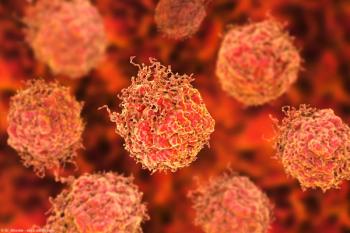
High-grade prostate cancer: Not all cancers created equally
All-cause and cancer-specific outcomes for Gleason grade 8 and 9 cancers are significantly better than Gleason grade 10 cancer.
Key Points
Atlanta-Byron Lee, MD, PhD, and his colleagues at Cleveland Clinic's Glickman Urological & Kidney Institute began their study of prostate cancer by asking if all "high-grade" prostate cancers are created equal.
The answer, which Dr. Lee presented at the AUA annual meeting in Atlanta, is a resounding "no." All-cause and cancer-specific outcomes for Gleason grade 8 and 9 cancers are significantly better than Gleason grade 10 cancer, Dr. Lee and his colleagues found.
"Patients with Gleason 10 disease are at a very high risk of dying of the disease. Indeed, Gleason 8 is a bad disease, but it is not on the order of Gleason 10. Patients with Gleason 10 should be directed toward systemic therapy," Dr. Lee told Urology Times.
Dr. Lee explained that Gleason 8, 9, and 10 cancers tend to be gathered under the same tent, which may lend some to think that they should be treated with and may respond to similar or approximately similar therapeutic strategies. The authors did not accept this and hypothesized that "the biology of these cancers are inherently different and thus lead to variations in presentation, treatment choice, and outcome."
To explore the hypothesis, the authors identified a cohort of 9,535 men with prostate cancer treated at the Glickman Urological & Kidney Institute between 1985 and 2011. They found 939 (9.8%) had high-grade (Gleason 8, 9, 10) cancer on biopsy. The breakdown of the high-grade cohort was Gleason 8, 6.5% (620 men); Gleason 9, 3.1% (293); and Gleason 10, 0.3% (26). All specimens were taken prior to therapy and were reviewed by genitourinary pathologists at the institution. The findings were analyzed via Pearson chi-square and Kruskal-Wallis tests and Kaplan-Meier analysis. The effect of Gleason score on overall and prostate cancer-specific mortality was estimated using Cox proportional regression analysis.
Higher PSAs with Gleason 9, 10
Notable characteristics fractured the three grades into differing groups. Men with Gleason 9 and 10 were more likely to have higher median PSAs than men with Gleason 8: 9.55 ng/mL for Gleason 9 and 19.55 ng/mL for Gleason 10 as compared to 8.96 ng/mL for men with Gleason 8. Men with Gleason 9 or 10 were also more likely to undergo androgen deprivation therapy.
The most striking differences, as noted earlier, lie in all-cause and prostate cancer-specific mortality rates. Multivariate analysis showed that after adjusting for treatment year, age, and PSA, Gleason score was associated with increased overall mortality (HR 1.973, 95% CI: 1.461-2.664, p<.001).
"Men with Gleason 10 cancer have significantly worse outcomes than those with Gleason 8 or 9 cancer, and categorizing these men in a single group may not be valid," Dr. Lee concluded.
Newsletter
Stay current with the latest urology news and practice-changing insights — sign up now for the essential updates every urologist needs.


















